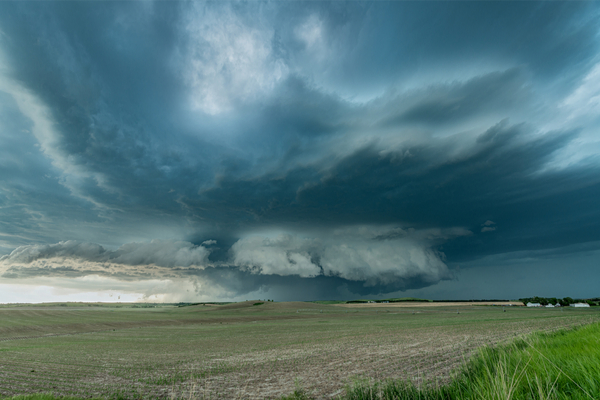Meteorologist Craig “Ceecee” Croskery has spent the last two years identifying, verifying and logging buildings that he described as “almost impossible” for the average citizen to easily find, despite the fact that they are meant to be places of refuge in life-threatening severe weather events.
As AccuWeather reports, mere seconds can mean the difference between life and death when a tornado strikes — and time matters even more when seeking out the closest public storm shelter. “It matters because oftentimes seconds count, and that extra time can help people get to safe shelter,” says AccuWeather Chief Meteorologist Jonathan Porter.
However, Croskery found many were difficult to locate and others that were listed as storm shelters weren’t built to the Federal Emergency Management Agency (FEMA) code. “It’s almost impossible in many cases unless they drive by it or unless they get an exact address, and even then, the GPS isn’t that great,” Croskery told AccuWeather Managing Editor of Content and Specials Monica Danielle in an interview.
Croskery, a Ph.D. student at Mississippi State University, has taken it upon himself to create a state-by-state database of tornado shelters. The dots he uses to identify each location are color-coded. The colors help identify if a shelter isn’t wheelchair accessible, the building type, its capacity and other details. These spaces are open to everyone, whether those seeking them out live in a foundation-based home or a mobile home.
On average, 72% of all tornado-related fatalities occur in homes, 54% of which are in mobile homes, according to the National Weather Service. Someone in a mobile home is 15 to 20 times more likely to be killed than their counterparts sheltering in a site-built home. Mobile homes provide little to no shelter from tornadoes, so residents should have an emergency preparedness plan ready and research the closest community tornado shelter, experts say.
In the case that you and your family are unable to make it to a storm shelter in time, here are some other ways to take shelter.
Sheltering in a foundation-based home
Rooms like closets, bathrooms and other rooms without windows are typically the go-to shelter location for people in on-site homes during a tornado. The best place to go, if possible, would be a pre-designated shelter area such as a safe room, basement, storm cellar or the lowest building level.
AccuWeather Senior On-Air Meteorologist Geoff Cornish explained that knowing the acronym DUCK could be life-saving.
What does DUCK mean in relation to tornado safety?
D — get Down to the lowest level.
U — get Under something sturdy.
C — Cover your head.
K — Keep in a shelter until the storm has passed.
“If you have a basement, that’s the best place to be when a tornado warning is issued,” said Cornish. “If you don’t have a basement, and that’s the case for many in the Midwest, get into a small interior room like a bathroom or closet that does not have windows [and has] multiple walls between you and the outside world.”
Sheltering in a mobile home
While there is no guaranteed safe place to take shelter in a tornado, staying in a mobile home during severe weather is extremely dangerous, even if it’s tied down properly. Residents should have a plan in place to give themselves plenty of time to drive to a shelter.
“Thirteen minutes is the average lead time for a tornado. That’s not a lot of time to get there, get in, get even out of bed in some cases,” he said. “And that can be something that emergency managers have to work on going forward.”
Part of having a tornado plan ready should include visiting the closest tornado shelter to become familiar with where to go and how to get there rather than relying on GPS.
What to do when severe weather strikes while on the road
Experts advise motorists to stay off the road until severe weather clears; however, there are ways to lessen any danger if it strikes while driving.
AccuWeather Storm Warning Meteorologist William Clark warned there aren’t any completely safe options if someone is driving near a tornado, just less dangerous ones. This includes never seeking shelter under a bridge or overpass, which can amplify the speeds of the winds and offer little to no protection from flying debris.
“The safest option is always to seek shelter in a sturdy structure, especially underground,” Clark said. “This can be achieved if the tornado is visible at a far distance and there is light traffic, by driving at right angles to the perceived path of the tornado and seeking shelter in a sturdy building off the roadway.”
If reaching a structure is not possible, experts recommend staying in the car with your seat belt on, getting as low as possible and finding cover. It’s essential to protect your head.
“If you are unable to make it to a safe shelter, either get down in your car and cover your head or abandon your car and seek shelter in a low-lying area such as a ditch or ravine,” the National Weather Service recommends. Other hazards to be aware of when seeking shelter in a ditch is there can be debris and flooding dangers. Covering your head is still essential in this scenario.
—
Photo Credit: Joe Belanger / Shutterstock.com
